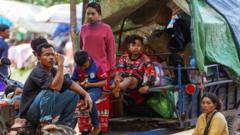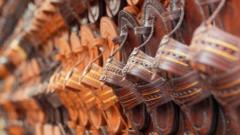In recent times, the traditional Romanian blouse, or "ie," has emerged as a politically charged symbol, particularly among nationalist figures who see it as a representation of national pride. The blouse, characterized by intricate embroidery, has a rich history that transcends its rural roots, having captivated artists and fashion designers worldwide. Iconic figures like painter Henri Matisse and fashion designer Yves Saint-Laurent have drawn inspiration from this emblematic garment.
Contemporary Romanian politics has seen the "ie" become a staple for nationalists, with far-right politician Diana Sosoaca harnessing its symbolism as a hallmark of her political identity. Sosoaca's frequent public appearances in the blouse have solidified its role within her political narrative. Similarly, George Simion, a recent nationalist presidential candidate, has been associated with the garment, further embedding it within the nationalist narrative.
The phenomenon has not been limited to Sosoaca and Simion. Other nationalists, such as ultranationalist Calin Georgescu, have taken to social media platforms like TikTok to showcase the blouse, presenting themselves engaging in various cultural activities. This trend has sparked a broader conversation about the ownership and appropriation of cultural symbols, as liberal voices in Romania argue that the blouse belongs to all and shouldn't be monopolized by a specific political faction.
Amidst the political tension, artisans continue to craft these elaborate blouses, with some requiring months of work to complete. Local vendors, like Daniel Stanciu, a business owner at the National Village Museum in Bucharest, are keen to promote the cultural heritage represented by the garment, underscoring the notion that this symbol of national identity should be celebrated as a communal heritage rather than a divisive political tool.
The debate surrounding the Romanian blouse embodies a growing tension between nationalism and liberalism, where the clothing item stands not just as a piece of fabric, but as a battleground for cultural and political identity in Romania.


















